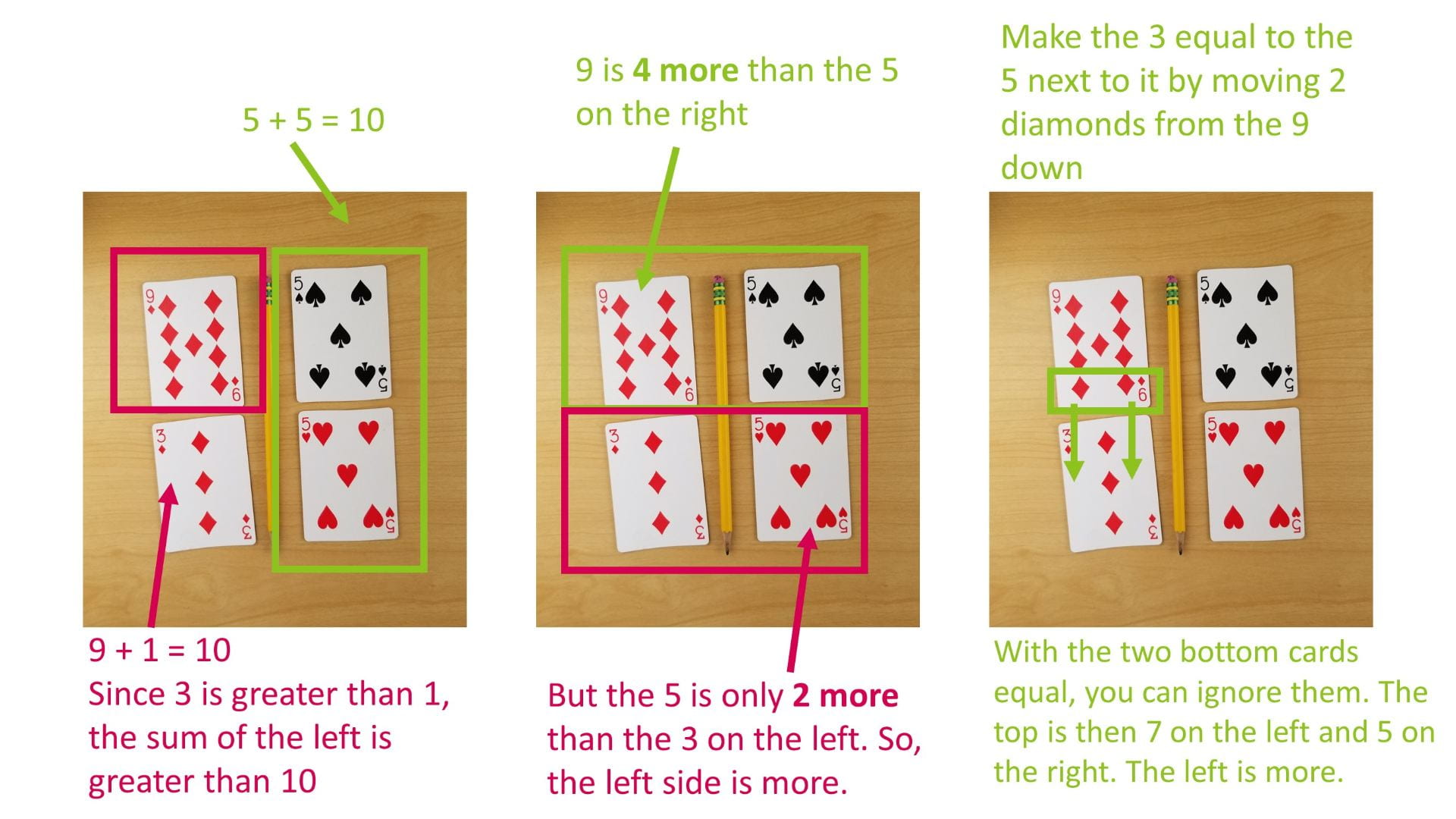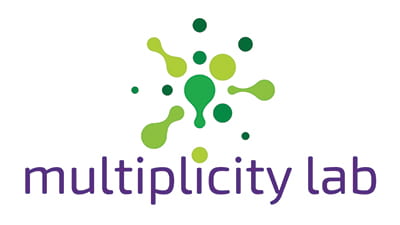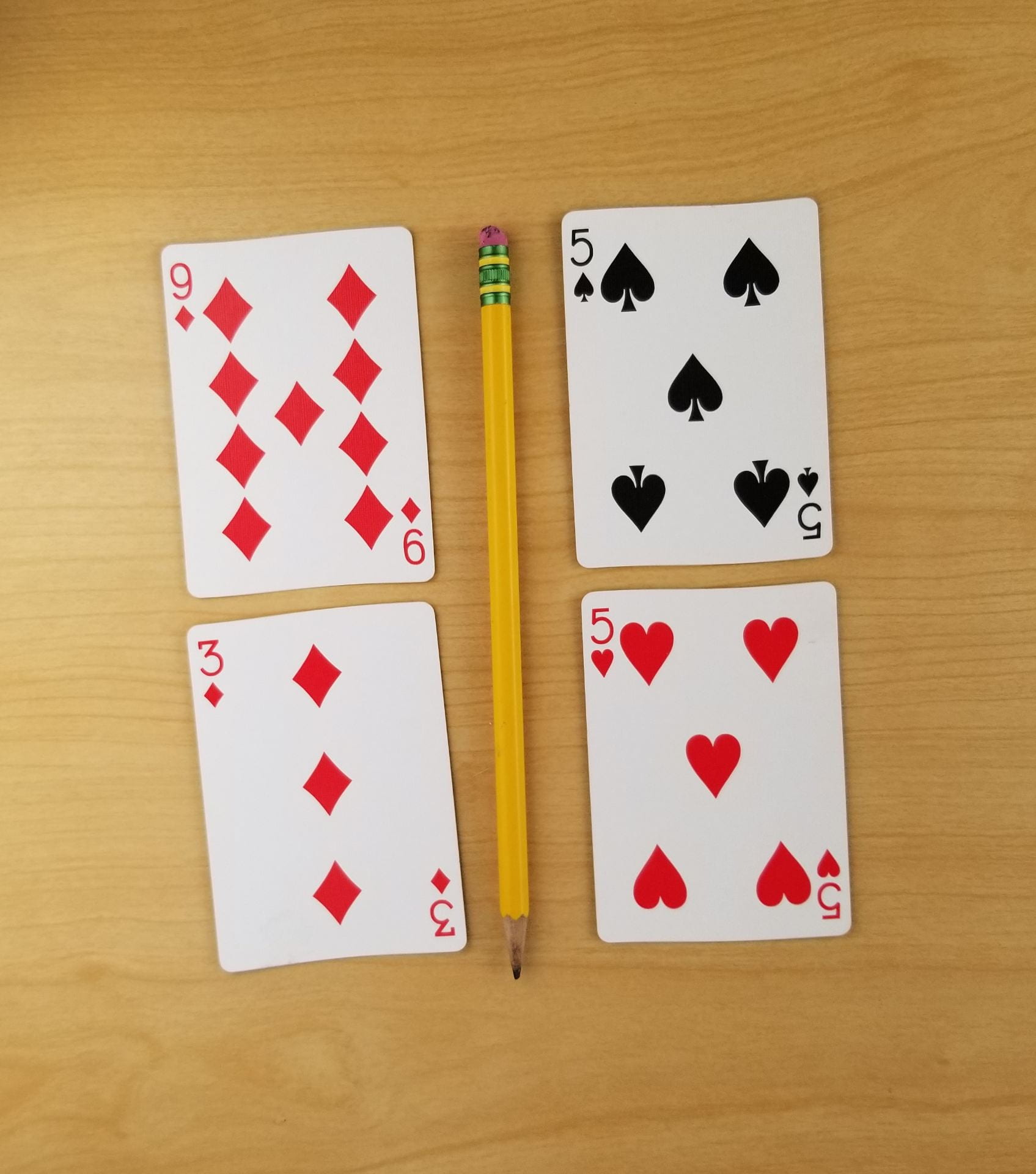Image of the Week: Play Your Cards
May 23, 2021Play Your Cards
Take a moment at look at this image of the week: Which is more, the left side or the right side? Watch closely what you mind does to decide. One key feature of this question is that it does not ask how many are on each side, just which is more. This opens up a wider variety of strategies and can lead to some interesting efficiencies. Some students will simply add 9 + 3 and 5 + 5 and compare 12 to 10 to decide that the left side is more. But you or your students might also have tried one these strategies:

Think how sophisticated these strategies are! They involve what is called relational reasoning, where instead of performing calculations to determine what is greater or how to make two expression equal, you think about the relationships between the quantities. This is related to how we might think about solving problems these without actually doing the calculations on both sides:
- 12 + ___ = 11 + 8
- 47 – ___ = 37 – 10
- __ + 61 = 60 + 21
Relational reasoning is a powerful strategy that requires development, and too often we do not give students the chance. Try this – or any of our playing card comparison activities – to give students a chance to develop relational reasoning with quantities they can see. One of the things we love about playing cards is that, if you exclude the face cards, each card shows both the numeral and the number of objects it represents. Those objects are organized and also take the same form, which you can see with the arrangement of the two different fives on the right of this image. For the numbers 2 – 6, the arrangement mimics dice. This means that students as young as kindergarten can be developing relational reasoning because they can see the groups and work with them visually, as in the third strategy shown above. Mentally moving the diamonds, or any other image, to make comparison easier is the very beginning of big ideas like equivalence and, much later, algebraic transformation.
Are you back in-person? Consider trying a couple of adaptations. You can print out our pdf version and have students annotate their strategies, especially those that involve moving the card symbols. You can have students share their thinking on a document camera so everyone can literally see what they saw. You can also make this into a game with decks of cards modified to remove the face cards. Partners can shuffle the deck and then deal our two cards on the left, two on the right and ask, Which is more? Lots of reasoning, no competition, repeat!
And we invite you to follow us on Twitter! Tweet us the fascinating ideas you students have about our activities or how you’re trying these activities in your space. We can’t wait to hear from you!
To multiplicity, cheers!
Jen Munson and the multiplicity lab group
Read the Archive
Get the Image of the Week
Each week we bring you a new image and activity you can do with your students tomorrow, and we spotlight a feature of the mathematical work that we think is important for students’ learning and your teaching.
Stay connected and see what's new.

